Mistletoe Magic 🌿🧙♀️
 “Mistletoe. I surmount all obstacles.”
“Mistletoe. I surmount all obstacles.”― Vanessa Diffenbaugh
December brought with it a week of icy temperatures here in the UK, and only the most stubborn leaves are still clinging to the trees. As if in readiness for the holiday season, a thin layer of frost sparkles on every surface, and a few clusters of evergreen mistletoe are newly visible amongst the bare branches.
 Mistletoe is a familiar decoration at this time of year, mostly thanks to the Victorians. Although kissing under the mistletoe apparently became a thing in the late 1700s, it was the Victorians in the nineteenth century who turned it into a tradition.
Mistletoe is a familiar decoration at this time of year, mostly thanks to the Victorians. Although kissing under the mistletoe apparently became a thing in the late 1700s, it was the Victorians in the nineteenth century who turned it into a tradition. However, mistletoe actually has a much more interesting backstory—one that long predates its place amongst the holiday lights and tinsel. I discovered it during some of my earlier writing research, and I was reminded just a few weeks ago (see 3️⃣ below!). Today’s blog post explains a little of mistletoe’s magical history and why it was once so much more than a holiday ornament.
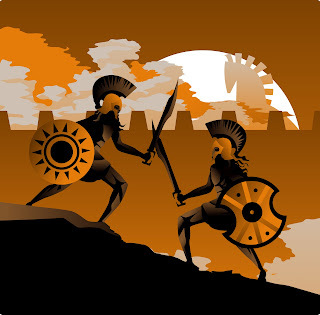 1️⃣ The Aeneid, by Virgil (19 BCE)
1️⃣ The Aeneid, by Virgil (19 BCE)
An epic poem almost ten thousand lines long, The Aeneid tells the story of Aeneas—exiled prince of Troy who was also the son of Venus (the Roman goddess of love). It chronicles his adventures from the end of the Trojan War until he eventually settles in Italy as founder of the great city of Rome.
Aeneas faces a lot of challenges along the way. One of them involves a visit to the Underworld to see the ghost of his father. In order to safely navigate the land of the dead, he has to collect a “golden bough” as a gift for Proserpina, Queen of the Underworld. The golden bough is mistletoe.
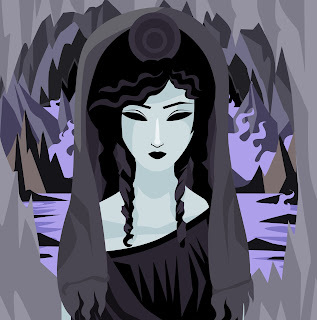 According to the myths, Proserpina only spends half the year in the Underworld, and her arrival in the land of the living triggers the start of spring. She is said to unlock the gates of the Underworld with a wand made from—you guessed it—mistletoe ☺.
According to the myths, Proserpina only spends half the year in the Underworld, and her arrival in the land of the living triggers the start of spring. She is said to unlock the gates of the Underworld with a wand made from—you guessed it—mistletoe ☺.I guess I should explain how The Aeneid showed up in my writing research. In the prologue of Seeking Magic, Jax and Shannon are trapped in Pompeii when Mount Vesuvius is about to erupt, setting the scene for their adventure in pre-treaty Terra. But I considered a few alternative times and places before I chose Pompeii, and one of them had Jax and Shannon in Troy just as the famous Trojan Horse came through the city gates!
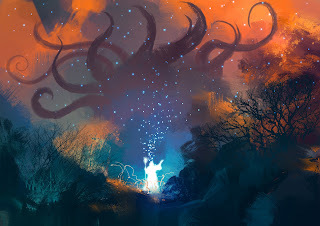 2️⃣ Celts and druids
2️⃣ Celts and druids
The Celts were once the largest group of people in Ancient Europe, with hundreds of tribes that stretched all the way from Spain in the west to Turkey in the east. Druids were Celtic priests, though a druid’s role in society extended far beyond religion, encompassing matters of law, medicine, and politics too.
Because the Celts never kept a written record of anything they considered sacred, most of what we know about them comes from other people (like the Romans). The Romans described the Celts as barbarians, but then the Romans were the invaders, so they weren’t exactly impartial. And I doubt the Celts would have had anything complimentary to say about the Romans in return!
 According to Pliny the Elder, a Roman living in Gaul (Western Europe) in the first century, mistletoe was revered by the druids. The plant’s evergreen leaves, and its ability to grow without any visible source of food or even roots, made it an emblem of fertility and immortality. Mistletoe could only be harvested with a golden sickle on a particular day in the lunar cycle, and it was believed to be an antidote to all poisons.
According to Pliny the Elder, a Roman living in Gaul (Western Europe) in the first century, mistletoe was revered by the druids. The plant’s evergreen leaves, and its ability to grow without any visible source of food or even roots, made it an emblem of fertility and immortality. Mistletoe could only be harvested with a golden sickle on a particular day in the lunar cycle, and it was believed to be an antidote to all poisons. When I was writing Surviving Magic, I wanted to include a (fictional!) Celtic spell when Galen and Claudia visit Britannia, so I did a bit of research on druids and magic for inspiration. Pliny wrote, “Even today Britain is still spell bound by magic.” Two thousand years later, I think that statement remains more true than not.
 3️⃣ Norse mythology (circa 9th century CE)
3️⃣ Norse mythology (circa 9th century CE)
“And why’d they include Balder? No one’s even heard of him.”
I discovered the third and final example of mistletoe magic when I was writing Matched in Magic. Xytovian magicians wear protective amulets, and although I eventually decided the amulets would be made from a kind of crystal, I considered leaves and wood too.
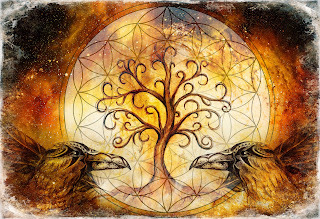 I should mention that there are a lot of different versions of this story, and this is only one of them! Balder was the god of light and universally loved on account of his kind and happy disposition and his beauty. So far, so good. Until, one day, Balder started dreaming of his own death. Frigga, his mother, was determined that Balder’s dreams would not come true, so she secured an oath from everyone and everything that they would not harm him.
I should mention that there are a lot of different versions of this story, and this is only one of them! Balder was the god of light and universally loved on account of his kind and happy disposition and his beauty. So far, so good. Until, one day, Balder started dreaming of his own death. Frigga, his mother, was determined that Balder’s dreams would not come true, so she secured an oath from everyone and everything that they would not harm him.Loki: Everyone and everything? Really?
Frigga: Yes. Oh, except I didn’t ask the mistletoe. It’s too small to do any harm.
Loki: […]
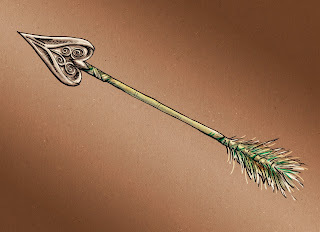 Shortly after that, Loki made an arrow from a piece of mistletoe. I’m sure you can guess what happened next. The arrow pierced Balder through the chest and killed him. He didn’t even get to go to Valhalla because he hadn’t died in battle. The other gods attempted to retrieve Balder from the death goddess, Hel, pleading for his return because everyone loved him so much. Hel requested proof in the form of tears, and Loki was the only person who refused to cry, thus ensuring that Balder stayed dead.
Shortly after that, Loki made an arrow from a piece of mistletoe. I’m sure you can guess what happened next. The arrow pierced Balder through the chest and killed him. He didn’t even get to go to Valhalla because he hadn’t died in battle. The other gods attempted to retrieve Balder from the death goddess, Hel, pleading for his return because everyone loved him so much. Hel requested proof in the form of tears, and Loki was the only person who refused to cry, thus ensuring that Balder stayed dead. Frigga apparently held the mistletoe to a promise that it would never do harm again. It became a symbol of protection, and enemies that met under mistletoe had to lay down their arms and call a truce.
I think it’s fair to say there’s a lot more to mistletoe than meets the eye☺. It also demonstrates why writing research is one of my favourite things because there’s always a new story to discover. Thank you very much for visiting my blog today, and I wish you happy holidays ⛄✨.
Published on December 08, 2023 11:45
No comments have been added yet.



